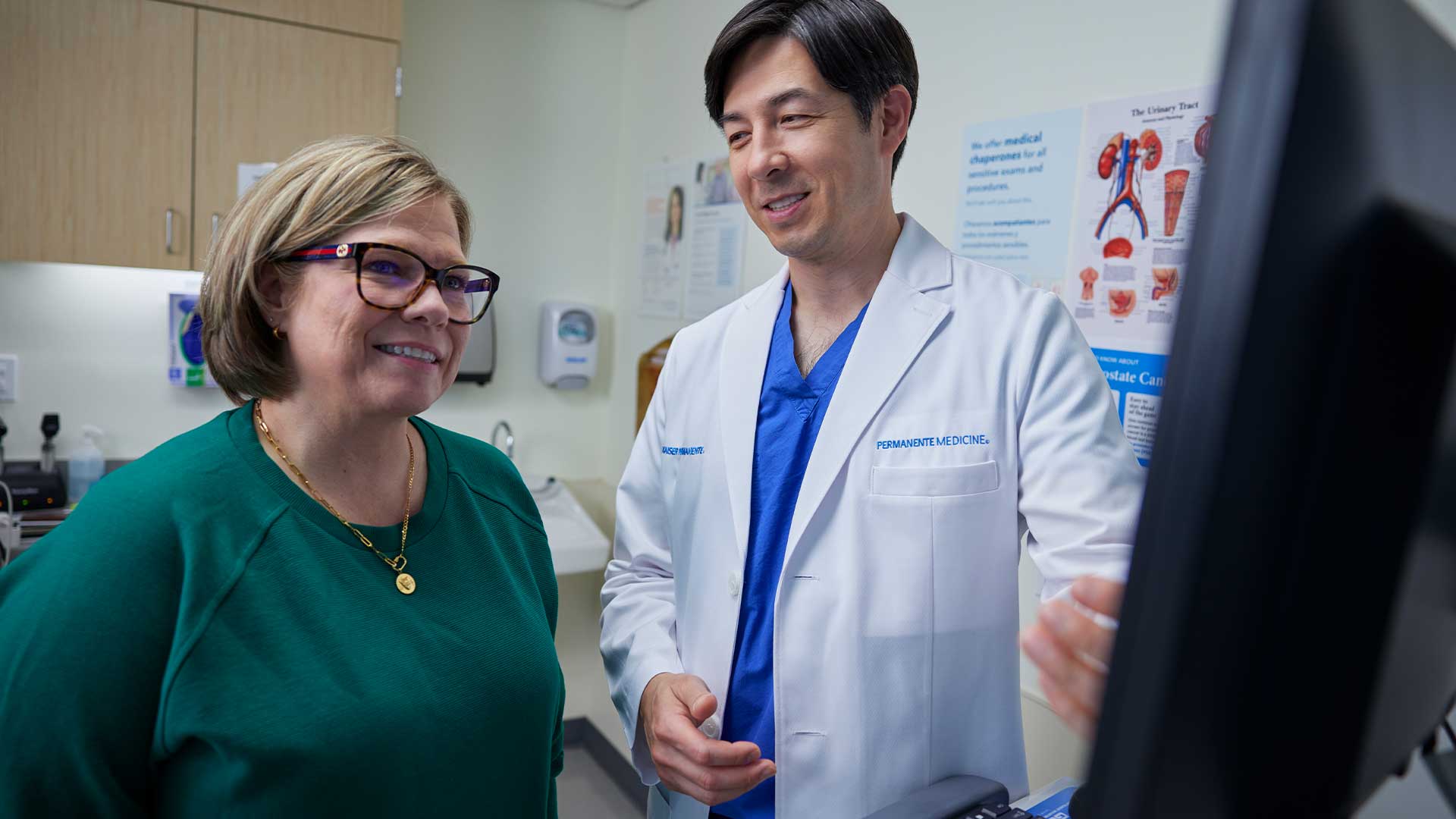The Permanente Federation co-CEOs share 7 strategies to build a trustworthy, affordable and accessible health care system for the next generation

Analysis: AI scribes save physicians time, improve patient interactions and work satisfaction
Artificial intelligence (AI) scribes record physician-patient conversations and draft summary notes, significantly reducing documentation burdens. A new analysis published in NEJM Catalyst shows that this innovation saved Permanente physicians in Northern California the equivalent of 1,794 working days in one year — nearly five years of work hours. The Permanente Medical Group’s (TPMG) analysis also found that AI scribes improved physician-patient communication.
The authors analyzed the impact of AI scribe adoption on the amount of time physicians spent on administrative work, physician satisfaction, and patient satisfaction over a 63-week period. The same authors previously published a February 2024 NEJM Catalyst article about lessons learned during a 10-week pilot of the technology. That article similarly reported that AI scribes saved physicians time on clinical notes and improved patient-physician communication.
In the new analysis (link below), physicians using AI scribes experienced statistically significant reductions in:
- Note-taking time outside of 7 a.m. to 7 p.m.
- Time spent per appointment
- “Pajama time,” work done during personal hours outside of 7 a.m. to 5:30 p.m.
Related AI scribes story: Lessons learned from the Kaiser Permanente rollout of AI scribes
“We have an opportunity and obligation to take advantage of innovative AI that improves patient care and augments our physicians’ capabilities, while supporting their wellness,” said analysis co-author Kristine Lee, MD, TPMG associate executive director of virtual medicine and technology.
Improved physician-patient interactions
Patients and physicians reported satisfaction with AI scribes. Forty-seven percent of patients said their doctor spent less time looking at their computer during a visit, and 39% said their doctor spent more time speaking directly to them. Physicians overwhelmingly said the technology had a positive effect on patient interactions (84%) and overall work satisfaction (82%). Mental health, emergency medicine, and primary care doctors were most likely to use the technology.
Related health care innovation story: Navigating AI’s Impact on health care
Despite the involvement of AI, the tool does not make decisions or recommendations to the doctor about patient care. The AI technology involved is generative AI applied to conversations to produce transcripts and summaries in a medical setting, explained co-author Vincent Liu, MD, MSc, a research scientist with the Kaiser Permanente Division of Research and TPMG chief data officer.
“We have now shown that this technology alleviates workloads for doctors,” Dr. Liu said. “Both doctors and patients highly value face-to-face contact during a visit, and the AI scribe supports that.”
High users of AI scribes benefitted most
Physicians who used AI scribes most frequently experienced the greatest time savings effect. The top third of users accounted for 89% of AI scribe activations during the evaluation period. Physicians who were most likely to adopt AI scribes tended to have more time spent on notes, orders, and clinical review per appointment, while having fewer visits per day before deployment of the technology.
High users saved two and a half times more time per note than those who used AI scribes less frequently. The “dose response” of AI scribes on time savings points to the need to encourage broader adoption among physicians, the authors say.
AI scribes were used by 7,260 Permanente physicians in more than 2.5 million patient encounters during the evaluation period. There was no correlation between a physician’s age and the likelihood of adoption.
The authors concluded that AI scribes show great promise to reduce physician workload. Additional research is needed to determine the impact and utility of AI scribes within different medical specialties.
Note: Read the full article on NEJM Catalyst.


